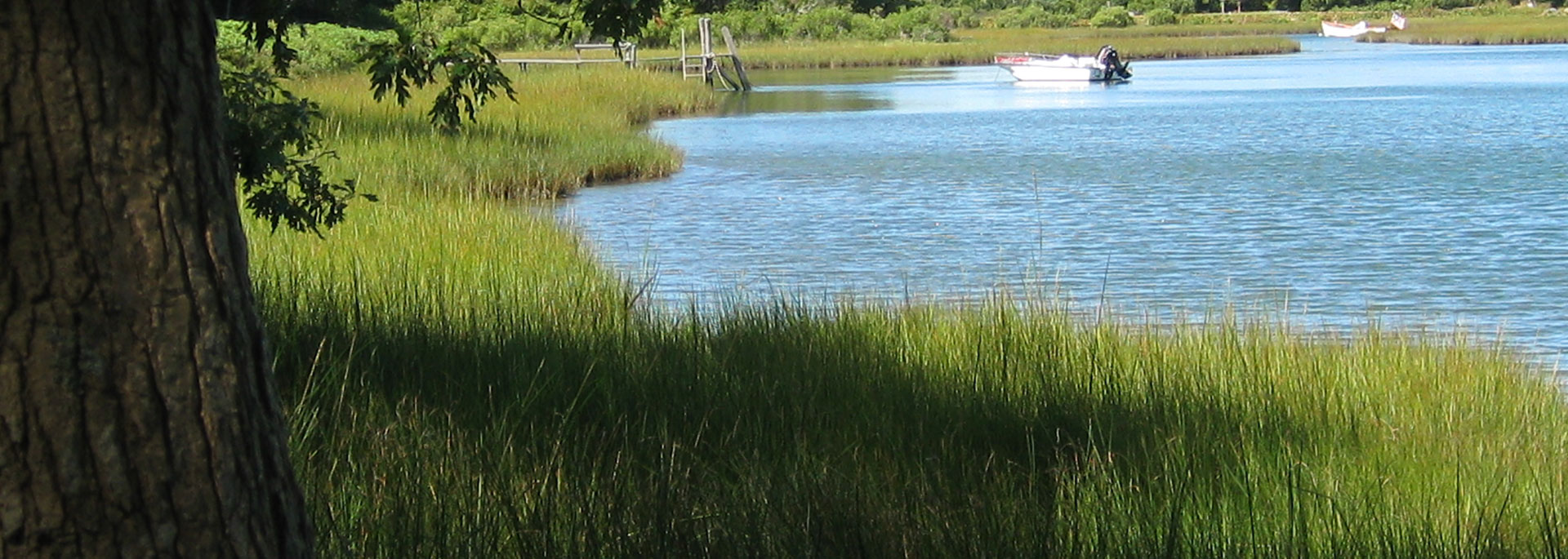Programs
Stewardship
Ecological Management
The sound, ecological management of our lands has long been a goal of Sheriff’s Meadow Foundation. In managing our lands ecologically, we strive to provide good habitat for certain types of wildlife, to maintain native plant communities and to help the rare plants and animals that find habitat on our lands. In certain cases, good ecological management requires a great deal of hands-on activity.
Mowing, Burning and Grazing
Mowing, prescribed burning and grazing are three ways that we manage fields and meadows in an ecologically sound manner. Essentially, by mowing, grazing, or burning, we are trying to check the natural process of forest succession, whereby shrubs and trees eventually overtake grassy areas. While forest succession is a natural process, there are certain natural communities that are much less common now, and these communities require disturbance, such as mowing, burning, or grazing in order to perpetuate them. On Martha’s Vineyard, these lands include the sandplain grasslands of the island’s great, flat outwash plains, heathland barrens of huckleberry and blueberry shrubs, and open fields and meadows.
Sheriff’s Meadow Foundation mows our lands using our tractor and other equipment; from time to time we also seek the help of outside contractors. Mowing is most often conducted in the fall and winter months. We mow in these colder months to avoid harming ground-nesting birds and also to allow warm season grasses, such as little bluestem, to be able to set seed before being mown. From time to time, however, it is necessary to mow during spring or summer, especially when needed to deplete the root reserves of encroaching woody vegetation.
We also occasionally conduct prescribed burning. Burning only occurs when the weather is just right; too dry, too windy, and the burn is called off. Yet when the weather cooperates, the prescribed burn is conducted by a team of trained, well-equipped and experienced individuals and led by an experienced “burn boss.”
We are also using grazing to maintain open areas and to remove invasive plants. In the summer months, a small herd of goats grazes a portion of Cedar Tree Neck Sanctuary. The goats are helping to restore open areas and eradicate invasive bittersweet. We believe that grazing has great potential and hope to use grazing on many other fields across the island.
Invasive Species Control
Much ecological management at Sheriff’s Meadow focuses on reducing or eliminating the scourge of invasive plants. We are seeking creative ways, with no use of herbicides or minimal use of herbicides, to eliminate such invasive plants as Phragmites australis, Asiatic bittersweet, multilflora rose and Russian olive. Good examples of our work to eliminate these invasive plants can be found at Nat’s Farm, Sheriff’s Meadow Sanctuary and the Caroline Tuthill Preserve.
Ecological Restoration
Sheriff’s Meadow Foundation is conducting restoration work on several of our properties.
At Sheriff’s Meadow Sanctuary, we are removing invasive plants such as Japanese holly, porcelain berry and an invasive form of willow, and at the same time we are trying to restore native habitats such as little bluestem meadows.
At Quansoo Farm, we are contending with Phragmites that is encroaching on the shores of Black Point Pond and we are trying to eradicate Tree-of-Heaven, mulitflora rose and bittersweet.
At Bittersweet Hill on Chappy, we are trying to control the plant that is the property’s namesake.
At Cedar Tree Neck Sanctuary, a herd of goats from the Native Earth Teaching Farm is helping to eradicate bittersweet from the land.
At the Eberstadt Preserve and Caroline Tuthill Preserve in Edgartown, we are working to restore native meadows in areas that have been overtaken by porcelain berry and bittersweet.






